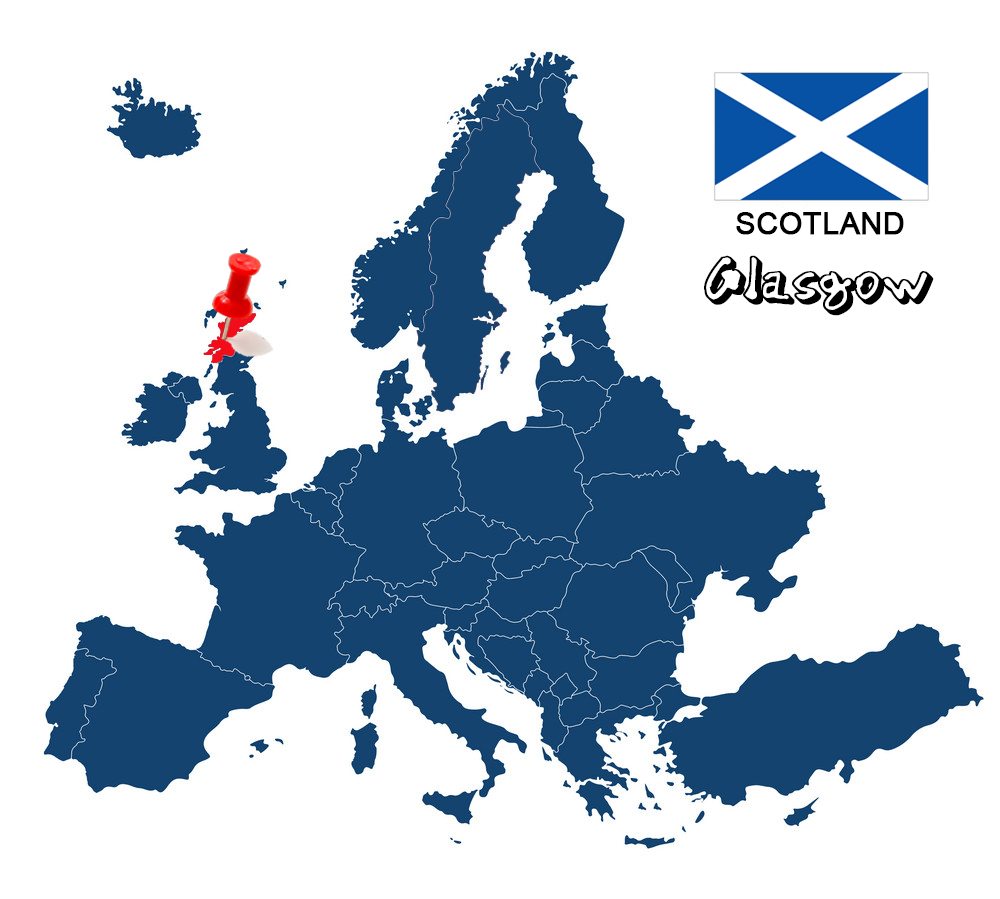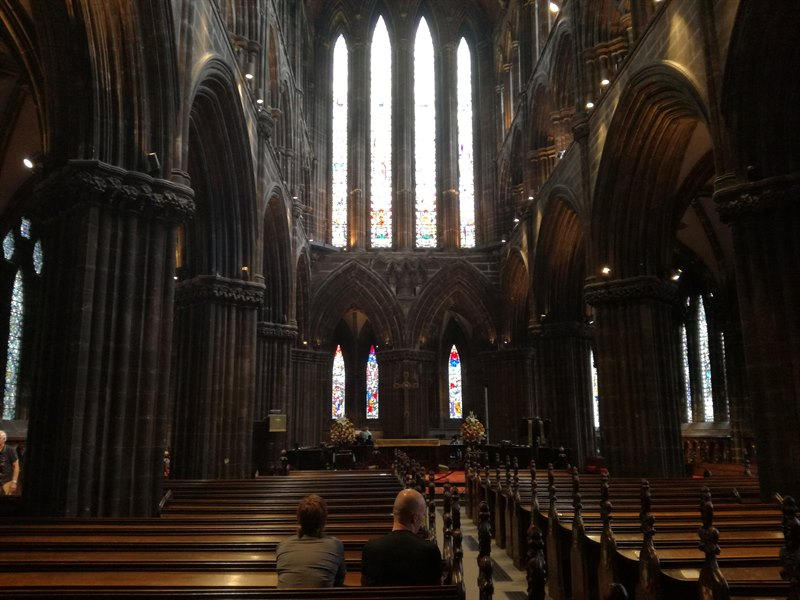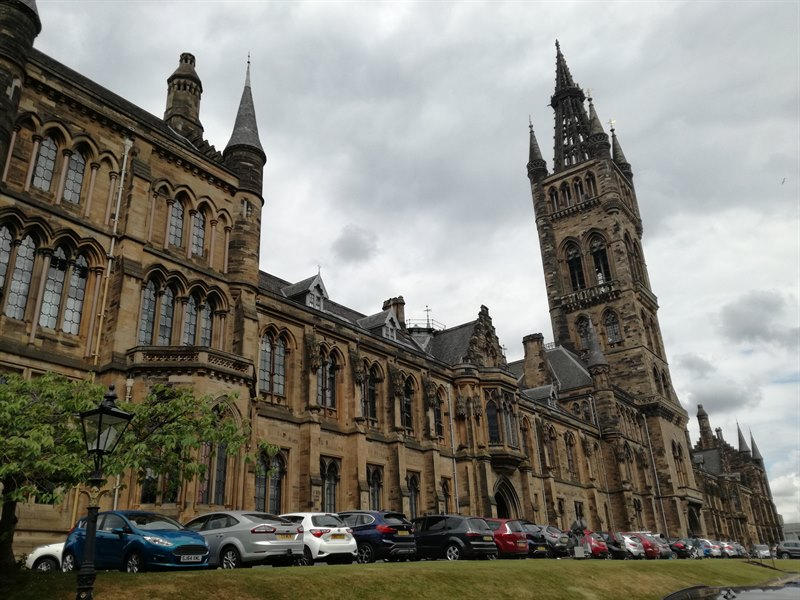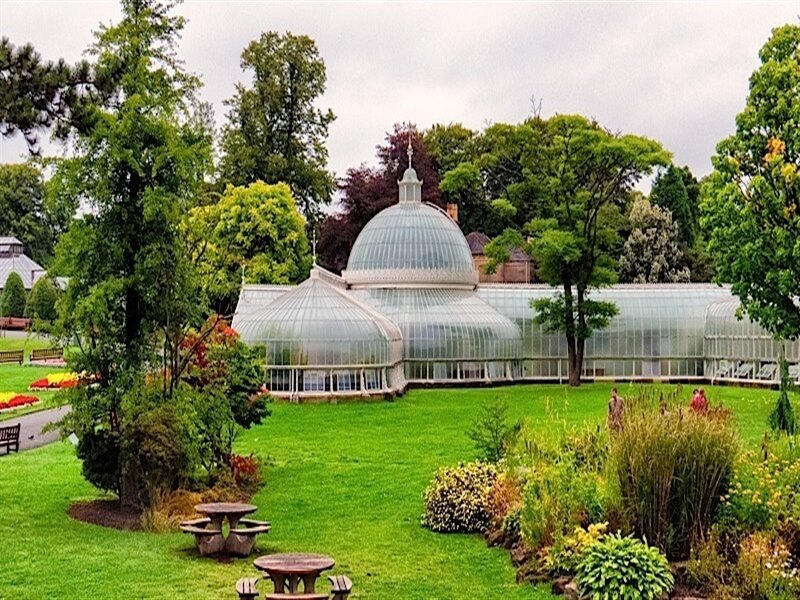
To be honest the only information I had about Glasgow had to do with football (Celtic-Rangers), Harry Potter and their university. Neither was at the top of my travel list and certainly neither would ever rise, but ultimately I'm thankful I took the train from Edinburgh and visited it. Escaping from the tourist frames of the Scottish capital, Glasgow left a very positive impression on me, being a young city, full of vitality and many attractions waiting to be discovered.
A few words about the city
Although Glasgow is Scotland's largest city (and third largest in the entire UK), it is not the capital of the country. The population of Glasgow reaches 598,830 inhabitants, while the wider area, also known as Greater Glasgow has 1.1 million inhabitants. It is probably in the “shadow” of Edinburgh, at least from a tourist point of view, although it is only an hour away by train. This does not necessarily mean anything, since Glasgow has a lot to offer to a discerning traveler. Still one of the greatest powers in the shipbuilding and shipbuilding industry, it has a university that played a key role during the Scottish Enlightenment and for lovers of the Harry Potter Series, this particular university was an inspiration for the famous Hogwarts. So I will try to introduce you to Glasgow through my own eyes and share with you what I think should be seen by someone visiting the city for the first time.
Glasgow Cathedral
The Glasgow Cathedral is so honorably named because of the importance of this historic building, and not because it is the seat of the bishop of Glasgow. The history of the temple is inextricably linked with the history of the city, and it is assumed that its location is exactly on the spot where the patron saint of Glasgow, St. Kentigern, built the first church. The Tomb of the saint is in a crypt in the basement of the temple. It dates back to 1136 and is built in Gothic style, and is one of the few Scots. Temples that survived intact over the years.

Behind and east of the Cathedral, on a hill, stands a Victorian cemetery, known as Necropolis. Apart from the fact that you will have the opportunity to admire the city from above (there are not many places you can do this in Glasgow), this place looks more like an open-air museum than a cemetery. There are buried over fifty thousand people, among them prominent figures of Glasgow, while there are about 3500 beautiful tomb-monuments. Admission to both places is free.
George Square
George Square is named after King George III and is the most central point in Glasgow. It is such an important part of it, that it has been the starting point of the city's entire road plan. Although since 1781 it has always been the central square of Glasgow, it has not always been the centre of social life, as in the early years it was merely a mire of muddy waters where horses were slaughtered. Over the years, houses of Georgian architecture began to be built, the railway station was opened, and since 1842 the square began to be considered the center of the economic life of the city. The square is the starting point or end point of demonstrations, as well as the point of holding events, while it is surrounded by important and historical buildings, the most important of which is the Glasgow City Chambers. This impressive building was constructed between 1882 and 1888, with Victorian architecture and has been for about a hundred years the headquarters of successive municipal councils. The front of the building depicts Queen Victoria, while above is the statue of truth, known to locals as the Statue of Liberty of Glasgow. Public tours are held at the Town Hall twice a day at 10.30 a.m. and 2.30 p.m. from Monday to Friday and tickets can only be purchased at the central counter.
Kelvingrove Art Gallery and Museum
Certainly the Kellingrove Art Gallery and Museum is the most famous building in Glasgow and not unfairly, considering that it is the most visited museum/gallery outside of London. It is located in front of the homonymous Kelvingrove Park and very close to the University of Glasgow. Its characteristic red color is due to the traditional red Scottish stone, while an urban legend says that the architect of the building had committed suicide when he found that the building was built upside down. That is the main entrance facing the park, although this is not true, as the plan was always the entrance of the building facing the park. Following a recent shake-up that cost £ 27.9 million, the Kellingrove Museum has become more impressive than ever. On its three floors, there are 22 galleries with about 8,000 works of great international value, which will take you through the history of ancient civilizations from around the world and at the same time will give you information about the city of Glasgow in the 20th century. As with all museums in the United Kingdom, admission is free.
University of Glasgow
The University of Glasgow is certainly one of the things that both the city itself and the whole of Scotland are proud of. With a history of around 550 years, it is the fourth oldest university in the United Kingdom and is a key pillar for Scotland's largest city. It has a flexible and innovative study system that allows students to make the final decision on the subject of their diploma at the end of their second year! As far as the campus is concerned, it is located in the heart of the city and as I mentioned in my introduction, it was an inspiration for Hogwarts of Harry Potter Series. The beautiful arcades, green exteriors and highly functional halls are some of the reasons I suggest you visit the University of Glasgow to feel some of the "magic" of the space and see with your own eyes, how Scottish students go about it.

Glasgow Science Centre
The Glasgow Science Center is one of the most impressive buildings in the city. It is located on the south bank of the Clyde River and has been operating since June 2001, at the urging of Queen Elizabeth II. It is one of the most popular attractions in Scotland and aims to entertain and learn scientific things, through interactive exhibits, workshops, events, activities, the impressive planetarium and of course the IMAX cinema. Admission costs 11.5pounds for ages 16-59, while for children, the unemployed and students it costs 9.5 pounds. On the tickets there is a voluntary small donation of the order of one pound in favor of the scientific center.
Botanic Gardens
In the north of the city, you will find another great attraction of Glasgow and of course I am talking about the Botanic Gardens. The botanical garden in its current location has existed since 1842 and has many glass greenhouses, where you will have the opportunity to admire collections with rare and exotic plants from around the world. The most famous of these greenhouses is called Kibble Palace, which is structured with wrought iron and glass, while covering an area of 2137 m2! A trademark of the building is a large collection of orchids, carnivorous plants and tree ferns. As it is understood, the Botanical Garden of Glasgow is a very good choice for walking the sunny, and not only, days in the city, for relaxation and better acquaintance with nature. Admission is free.

The Mackintosh House
The Mackintosh House houses one of the most important collections of the work of the Scottish architect, designer and artist, Charles Rennie Mackintosh (1868-1928) and his wife, the artist Margaret Macdonald Mackintosh (1864-1933). This is an attempt to copy the original house, where the couple lived, since it is decorated with things from the original building. It thus escapes the Cold style of a museum and presents its exhibits in a more effective manner. Connoisseurs will have the opportunity to see up close the original and famous Mackintosh chairs, and also "mere mortals" to get a "taste" from the architectural point of view of the great artist. The entrance costs only 6 pounds and takes place in groups of up to 12 people, thus limiting crowds and protecting exhibits.
Clyde Αrc
The Clyde Arc, or as the locals call it "Squinty Bridge", is a beautiful road bridge, which was commissioned on 18 September 2006 and extends over the River Clyde, connecting Finnieston with Pacific Quay and Glasgow Science Center. What makes this bridge special is its innovative curved design and the way it crosses the river at an angle. In the evening, along with the appropriate lighting, the Clyde Arc becomes even more impressive, and it is impossible not to capture it with your camera.
Buchanan Street
Buchanan Street is Glasgow's most commercial street and therefore the busiest. This pedestrian street starts from the city center near the railway station and ends at the River Clyde, a distance of almost one kilometer! There you will find dozens of shops, shopping centers, cafes and restaurants, while it's unlikely you'll come across some street artists singing from rap to modern opera. It is no coincidence that many Scots, residents of other cities, take the train and prefer this route for their shopping, as it is said to be the ideal choice in Scotland.

How to go
In Glasgow there are two airports, Prestwick, which hosts the so-called low cost companies, and Glasgow Airport, which is the city's main and largest airport. Unfortunately, there is no direct flight from Thessaloniki to Glasgow, so you will have to make a stopover. The most economical solution is that of eurowings with a stopover in Dusseldorf, which with proper planning can find tickets starting from 248€ round trip.Another solution is to travel to Edinburgh and from there take a train (as I did), which costs about € 10 and in less than an hour you will be in Glasgow.
Where to stay
Glasgow is a big city and admittedly is in the shadow of Edinburgh, always on a tourist level. So I don't think it's going to be difficult to find accommodation, as there are plenty of hotels and apartments. So my suggestion is Safestay Glasgow. A three-star hotel located in the heart of the city, offering good value for money.
How to move
In Glasgow there is an underground railway (metro), which although it has only one line, runs in a circle and covers a large part of the city. A one-way ticket costs one pound, and you can issue a one-day ticket for four pounds. Also, in Glasgow there are frequent bus routes with continuous stops, which will definitely take you close to the place you want. Also, if you want to go to the suburbs of Glasgow, you can use the city's suburban train, whose trains meet the metro at Queen Street and Partick stations. Finally, regarding taxis, there are two companies, the classic black taxi that you usually stop on the street and are more expensive and the gray, which you can only call by phone and is somewhat cheaper.
What to eat
The truth is that Scotland is not very famous for its local flavors, but there are some dishes you have to try. The most famous and at the same time most "strange" dish in Scotland is called haggis and it is a form of minced meat made from sheep's intestines (heart, liver and lungs), along with various spices and all this is cooked in the animal's stomach. No doubt you should also try Scottish Pie, which is essentially a meat pie, with a double crust and stuffed with minced lamb or some other meat. Also, don't forget to taste the famous Scotch eggs, boiled eggs that are wrapped in sausage meat, breaded and fried in hot oil. Finally, once you are in the UK, you need to feel a little British by tasting their "national food", which is, of course, the fried fish accompanied by french fries, the well-known fish and chips. For a drink, I don't think I need to make any special mention, since I take it for granted that you will drink a glass (at least) of Scotch whiskey in the dozens of bars and pubs in Glasgow.
Useful information

In the United Kinkdom, while still in the European Union, we travel with a passport or a new type police ID, where the details are indicated in Latin characters.
In Glasgow the language used is English, but the Scottish accent is special, since the locals speak heavy and cut syllables, so you may often find it difficult to understand exactly what they mean. Of course, they are all very polite and affable to help you, since they greatly appreciate that you speak their language.
The currency of the country is the British pound and its exchange rate at the moment is 1€ = 0.9001 £
Convert your money either in Greece, or in small shops, as the exchange markets hold a very large commission.
Glasgow is two hours behind Greece (GMT 0).
Getting to and from airports is simple, since there are continuous bus routes, which will take you directly there.
The Greek unpaid Consulate General in Glasgow is located at 1 G12 OTR Kirklee Street and its phone is + 44 141 3340360.
In Glasgow, driving is backwards, so be careful how you cross the roads.
If you have time, do not miss a day trip to the Scottish Highlands. Travel agencies in the city carry out many routes every day.
The weather usually in Glasgow is rainy, so always carry an umbrella with you, while in winter the temperatures are quite low with wind and snow. The ideal period to visit is either autumn or summer.
Recommended excursions → Edinburgh, Highlands

If this article seemed interesting or contributed to your quality information, then you can like my facebook page: o_thessalonikios or follow me on instagram!
Mouzakidis Pantelis








